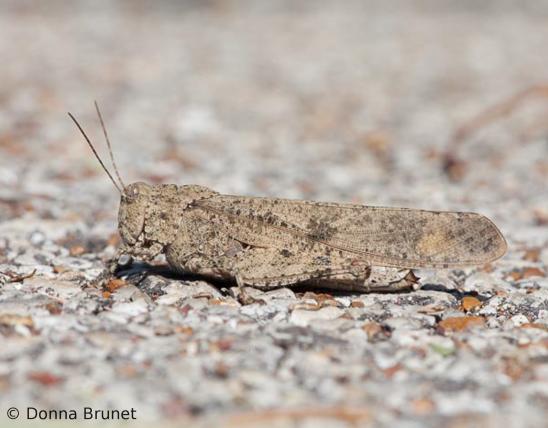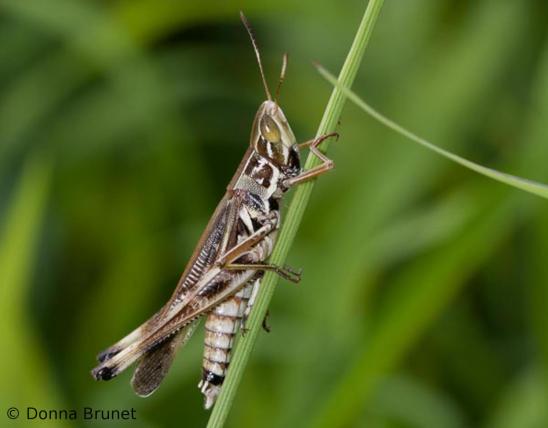
The differential grasshopper is relatively large. Coloration can vary somewhat and may be green, brownish green, or olive green. The femurs of the hind legs have a black herringbone pattern, and the tibias are usually yellow with black saw-toothed spikes.
Learn more about our other short-horned grasshoppers in their group entry.
Length: to 2 inches.

Statewide.
Habitat and Conservation
Found in a wide variety of habitats, including open fields, gardens, grasslands, meadows, prairies, roadsides, and lands along ponds and streams. Originally this species lived only in wet meadows and creek bottomlands, but with the spread of farms, it has become a pest of many food crops. Population numbers fluctuate from year to year.
Food
The adults and nymphs feed on a wide variety of grasses and other leafy plants. They also eat crops, including corn, soybeans, alfalfa, cotton, vegetables, small grains, and the leaves of fruit trees. When they run out of food in one area, the adults can travel up to 10 miles in a day in search of more food.
Status
Common and abundant.
Life Cycle
Mating takes place late in the summer or in early fall. The female uses her ovipositor to press long eggs masses into the soil. She is capable of laying up to 8 egg masses that contain 25 eggs each. The eggs overwinter, and the nymphs emerge the following spring. It takes the nymphs approximately two months to reach adulthood.
Human Connections
At times, differential grasshoppers occur in large enough populations to cause severe damage to agricultural crops. Remember, however, that one of their favored food plants is giant ragweed, a big cause of late-summer hay fever!
These grasshoppers are a favorite bait for anglers.
Ecosystem Connections
These grasshoppers are an important component in the food chain for many animals, including foxes, raccoons, opossums, squirrels, amphibians, lizards, snakes, birds, turtles, bats, and many predatory spiders and insects.

































